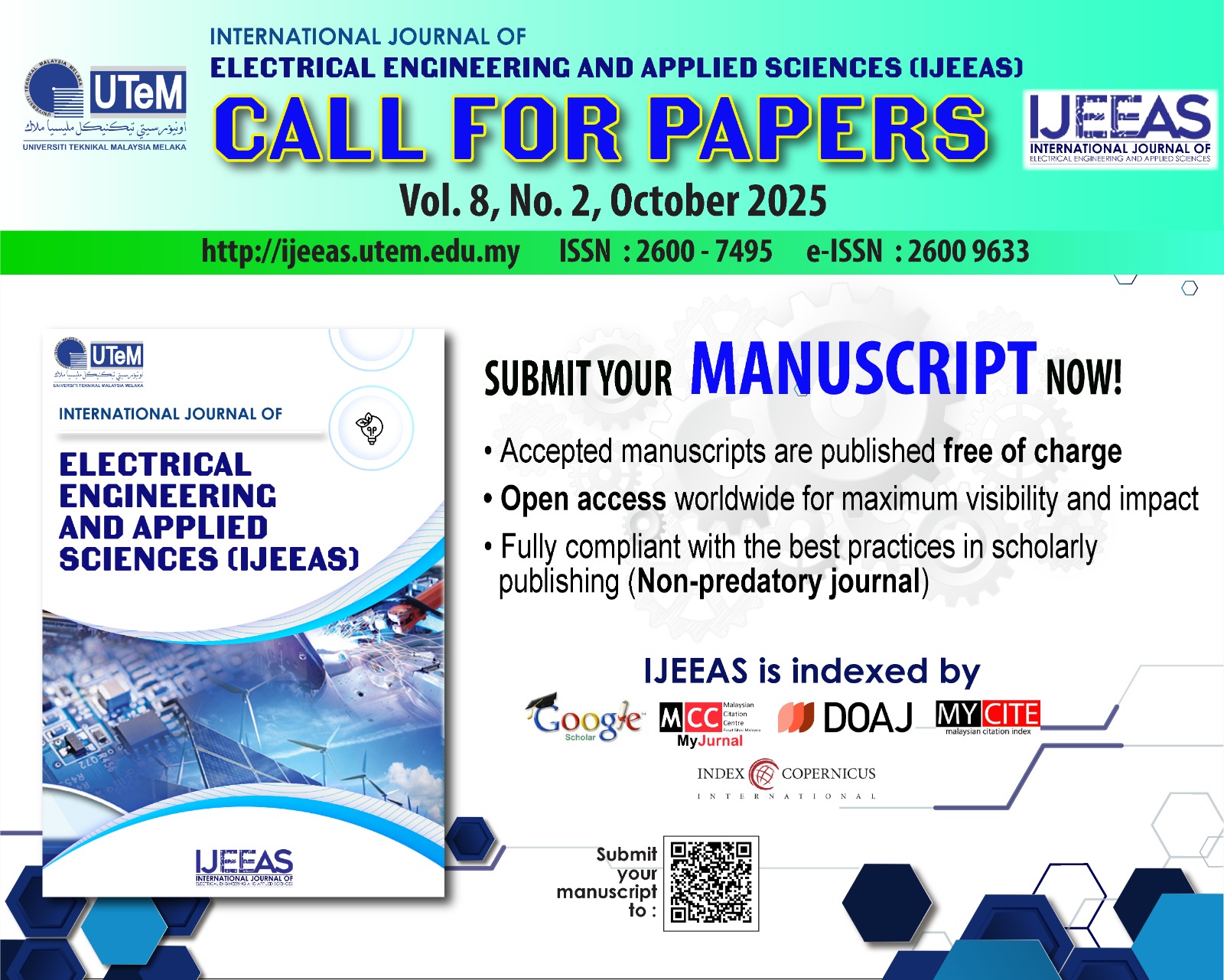Enhancing Photovoltaic System Efficiency Through Fuzzy Logic-Based Maximum Power Point Tracking
DOI:
https://doi.org/10.54554/ijeeas.2023.6.02.006Abstract
This study utilizes a fuzzy logic controller (FLC), a type of computational intelligence tool, for determining a photovoltaic (PV) system's maximum power point (MPP). The solar PV system comprises of a PV module, an MPP controller, all of which are designed to monitor and optimize the highest point of energy generation in a photovoltaic system and a DC-DC boost converter. FLC is the core methodology employed in this study for maximum power point tracking (MPPT) within the converter-supplied PV system. The MPPT process involves the analysis of system parameters, including current error and the rate of change of errors, which serve as the input to the fuzzy logic system. The FLC continuously processes these inputs to adjust the duty cycle of the DC-DC boost converter, ensuring that the PV system operates at its highest energy generation potential. The 1Soltech 1STP-215-P PV model is utilized for this study, and it is representative of the PV model used in simulation studies. Photovoltaic systems are inherently nonlinear and respond to various external factors, making them less efficient. Therefore, the proposed intelligent control method, based on artificial intelligence principles, offers an easily implementable solution and provides valuable feedback. It exhibits robust performance even when solar irradiance levels fluctuate and excels at tracking MPPs, among other advantages. To simulate and evaluate the maximum power point tracking in a solar system, a PV system incorporating a fuzzy logic controller is designed and simulated using MATLAB/Simulink. The simulation results confirm the effectiveness of the proposed fuzzy logic controller in maximizing electricity generation from the PV panels while maintaining their operating voltage at an efficient level.
Downloads
Downloads
Published
How to Cite
Issue
Section
License
Authors who publish with this journal agree to the following terms:
- Authors retain copyright and grant the journal right of first publication with the work simultaneously licensed under a Creative Commons Attribution License that allows others to share the work with an acknowledgement of the work's authorship and initial publication in this journal.
- Authors are able to enter into separate, additional contractual arrangements for the non-exclusive distribution of the journal's published version of the work (e.g., post it to an institutional repository or publish it in a book), with an acknowledgement of its initial publication in this journal.
- Authors are permitted and encouraged to post their work online (e.g., in institutional repositories or on their website) prior to and during the submission process, as it can lead to productive exchanges, as well as earlier and greater citation of published work (See The Effect of Open Access).







